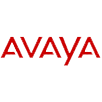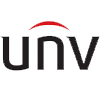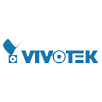- +971 52 814 2054
Free Consultation
Please fill this form.
ERP Software Solutions UAE
ERP, or enterprise resource planning, is measured programming intended to incorporate the principle elements of an association’s business forms into a brought together framework. An ERP framework comprises of programming parts, as a rule, called modules, that each emphasis on basic business work, for example, fund and bookkeeping, HR, creation, materials the board and client relationship the board (CRM). Associations just utilize the modules they have to maintain their specific business.
Two attributes recognize ERP programming from assortments of all the more barely engaged business programming, which merchants and industry examiners frequently allude to as best-of-breed.
The first is the joining between modules that empowers them and their clients to cooperate. For instance, a business request made in the CRM module will be imparted to the creation module, so the assembling office will have the data about what item to make. At the point when the item is transported, the information in the stock administration module changes, and when the client pays, the bookkeeping module records the income.
The other distinctive element of ERP software programming is a focal database where modules record exchanges and other data, get to that information and offer it. Having what the ERP business calls a “solitary wellspring of truth” spares clients from entering data more than once. This thus improves information precision, encourages revealing and empowers cooperation between divisions.
History of ERP
ERP’s underlying foundations start in material prerequisites arranging (MRP), a framework for computing the materials and segments expected to make an item that was created by IBM engineer Joseph Orlicky in 1964. By the 1970s, MRP programming was a pillar of makers.
In 1983, the board master Oliver Wight created MRP II, which stretched out MRP to different sorts of assets, including financials, and included help for scope quantification, cost the board, shop-floor control and deals and activities arranging, among others.
Key highlights of ERP Systems
Four ERP ideas separate the product from most different kinds of business applications:
- far reaching incorporated business forms
- measured quality
- focal database
- predictable look and feel across applications
- human capital administration (HCM)
- request the executives
- deals the executives or CRM
- buying or acquirement
Key highlights of ERP Systems
ERP offers various advantages, the majority of which originate from data sharing and normalization. Since ERP modules share information more effectively than dissimilar or detached frameworks, they can make cross-departmental business forms simpler to oversee. They can likewise empower better bits of knowledge from the information produced in every day exchanges or coming into ERP frameworks from more current innovations, for example, IoT. Furthermore, ERP programming does the accompanying:
- supports efficiencies via robotizing information assortment
- empowers development by overseeing progressively complex business forms
- assists lower with gambling by empowering better administrative consistence
- cultivates coordinated effort through improved information sharing and correspondence; and improves flexibly chain the board.









